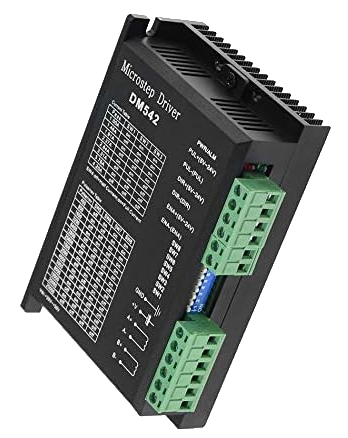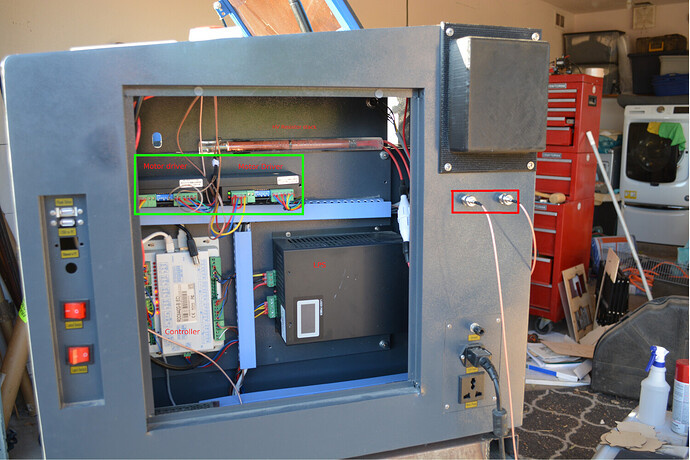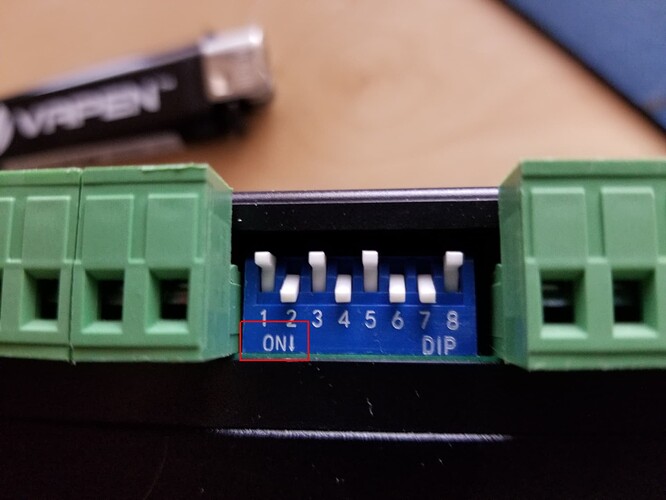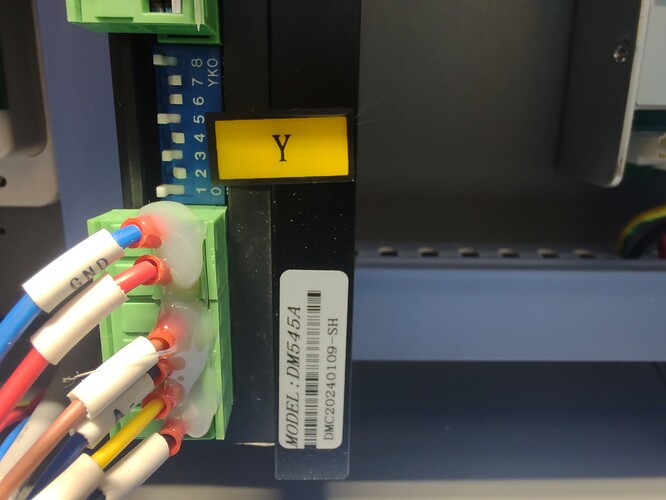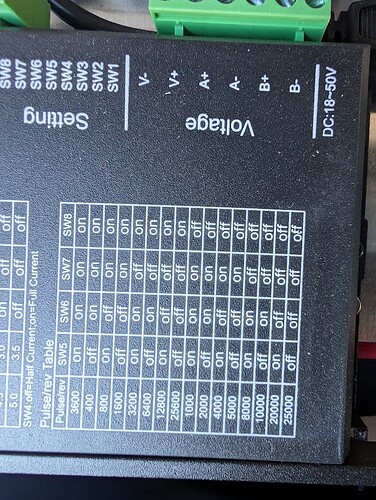A few months back I went from a 20w diode to an omtech 100w CO2. I’ve been doing material tests and otherwise messing around with different things since then (when I have time). I ordered the 4-wheel rotary from them, and got it last night. This morning I’ve been trying to set it up.
First I needed to address the issue of potential slipping and moving. I’d rather not spend another $50 to buy the stopper/spring set some dude makes on Etsy if I don’t need to. So I made a wall that fits around the wheel bushings, and slots behind the screw on the gear side of the rotary, out of 5mm acrylic. Then a little piece to act as a wall on the adjustment side. This makes kind of a very minor pinching, and it loses traction. So I made a small weight out of a 16mm bolt, and a handful of nuts. I wrapped it in electrical tape and rubber, and put it in the tumbler. That seemed to keep traction.
Next I set up the rotary settings in Lightburn. Off the top of my head: 67mm diameter wheels, and after a dozen 35mm squares cut into tape, about 3250 for the steps.
Then onto the material test. This went all stupid. Issue 1: everything is upside down and backwards (mirror image is NOT checked in rotary settings). Issue 2: from the first test square, it went completely off kilter; angle and spacing. It seemed to correct itself after a few lines of squares. So I assumed it had to do with the starting point.
I did some digging around here. I flipped my rotary 180° to start. Then I made a backup of my machine settings, and lowered the Y jump off and acceleration by a good bit. Off the top of my head: jump off was 20, I set it to 5, and acceleration was 3000, and I set it to 800. This visibly slowed down the start, I could see from hitting the frame button.
Now that I’m hitting the frame button, the laser seems to stop at a different point each time. I line it up on a center line to start, origin is “current location”, and job position is right-center. Something seems off, here are a few videos, taken back to back, all I did was line it back up on the line after, and hit frame.
